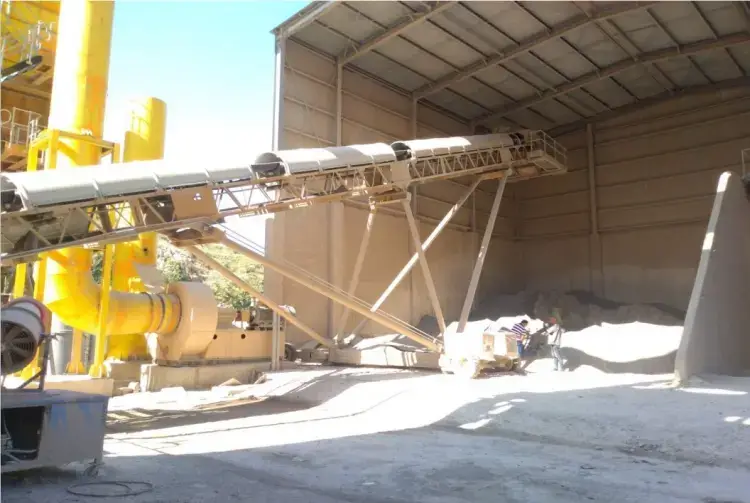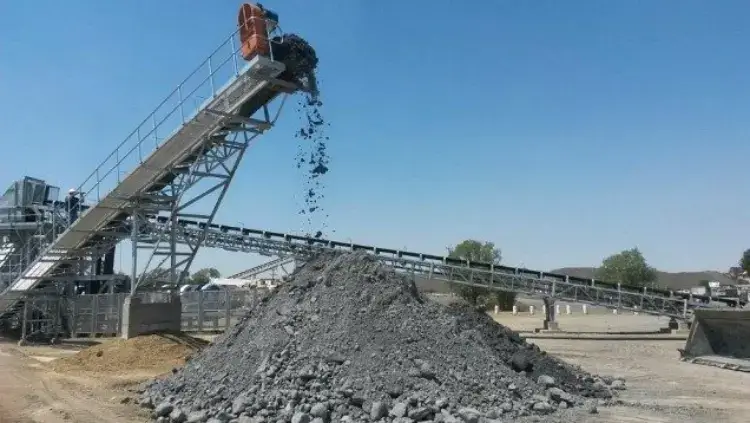Time:2024-10-15 10:13:47 Number of Clicks:
The telescopic conveyor is an indispensable piece of equipment in modern bulk material handling systems.Its primary function is to automatically adjust the conveyor's length according to operational needs,facilitating more efficient loading and unloading of materials.Compared to traditional fixed conveyors,the telescopic conveyor offers greater flexibility and adaptability,particularly in environments with limited space or where material handling is frequent.However,during actual use,issues with the flexibility of the telescopic mechanism often arise,leading to reduced operational efficiency and even potential safety hazards.Therefore,understanding the causes and solutions for the inflexibility of the telescopic mechanism is crucial for improving operational efficiency and reducing maintenance costs.

One of the most common issues with telescopic conveyors is the inflexibility of the telescopic mechanism,manifesting as jamming during extension or retraction,preventing the equipment from operating smoothly.The following are typical causes of this issue:
The telescopic section is the core of the conveyor,where high friction occurs.Prolonged or frequent use without timely lubrication can lead to wear of the mechanical components,causing jamming.
Telescopic conveyors typically operate in complex environments where debris or foreign objects can fall into the telescopic sections,causing obstruction.This can affect the performance of the telescopic mechanism,and in severe cases,render the equipment inoperable.
Improper installation may cause structural deformation,affecting the flexibility of the telescopic mechanism.For example,if the supporting structure is unstable or not securely connected to the ground,the conveyor may tilt during operation,hindering smooth movement of the telescopic arm.
Modern telescopic conveyors are often equipped with electronic control systems to automate the extension and retraction process.If the control system fails,the conveyor may not extend or retract as expected.Common causes of control system failure include:
Electrical faults,such as unstable power supply,damaged control circuits,or poor connections,are significant factors that can cause the control system to malfunction.
The control system often relies on sensors to provide real-time position feedback.If the sensors fail,the system may be unable to accurately determine the conveyor's current state,preventing precise telescopic operations.
In some cases,the design of the telescopic conveyor may have inherent flaws,leading to operational issues.For instance,improper material selection for the telescopic arm,unreasonable design structures,or a lack of consideration for the complexities of the operating environment can affect performance.
If the material used for the telescopic arm lacks sufficient strength,it may bend or deform under heavy loads,impairing the extension and retraction performance.
Poor design can cause interference between moving parts,hindering their flexibility.Designers should ensure that the relative positioning of all components is considered to avoid jamming due to design flaws.
Please contact us using the info below if you have any questions about Inflexible Telescopic Mechanism
● +86 136-6401-6717

Perform regular maintenance on the telescopic conveyor to ensure the lubrication system functions correctly and replace lubrication oil as needed.This reduces friction and prevents wear on mechanical components.Additionally,regularly check all connections to ensure they are secure and operational,addressing any issues promptly to ensure long-term,efficient operation of the equipment.
Before each operation,check for foreign objects in the telescopic sections and clean the work area if necessary.Especially during peak operations,a lot of debris may accumulate,and regular cleaning of the area can improve operational efficiency and reduce safety hazards.
Regularly inspect the conveyor's control system to ensure all electrical connections are functioning correctly,and sensors are working as expected.Replace any faulty components promptly to prevent downtime due to control system failures.
For telescopic conveyors with design flaws,consider redesigning or improving the equipment to better meet operational requirements.Referencing industry standards during design can ensure both performance and optimized structure,improving the overall performance of the equipment.
Operator training is crucial.Regularly train operators to increase their understanding of the conveyor's operational principles,maintenance procedures,and safety protocols.Enhancing operator professionalism can effectively reduce malfunctions caused by improper operation.
Zoomry shares a customer case study to help identify and resolve similar issues more quickly:
In an aggregate conveying project,a telescopic conveyor was used for loading and unloading materials.After a period of operation,the operator reported that the telescopic mechanism was becoming inflexible,significantly reducing work efficiency.Engineers inspected the site and found that the telescopic section was obstructed by foreign objects,and lubrication was insufficient.The following measures were taken:
Regular Maintenance:Increased the maintenance frequency,ensuring that lubrication oil was replaced regularly to reduce friction and extend the equipment’s lifespan.
Clean the Work Area:Assigned personnel to clear the work area regularly,preventing foreign objects from entering the telescopic section and ensuring normal operation.
Operator Training:Provided training to operators to improve their understanding of equipment usage,ensuring they were familiar with the operational and maintenance requirements.
After implementing these improvements,the telescopic conveyor's operational efficiency increased significantly,and the failure rate dropped.The work environment also improved.This case demonstrates that targeted improvements can effectively resolve inflexibility issues in telescopic mechanisms.
In conclusion,while inflexibility in the telescopic mechanism is a common issue,it can be effectively addressed through regular maintenance,removal of foreign objects,control system checks,design optimization,and operator training.Maintaining the equipment in good condition not only enhances work efficiency but also reduces failure rates,saving costs for the enterprise.As the logistics industry continues to develop,the frequency of telescopic conveyor usage will rise,and proper maintenance and management will be key to improving operational efficiency.
Copyright © 2002-2024 Zoomry Group Company Limited